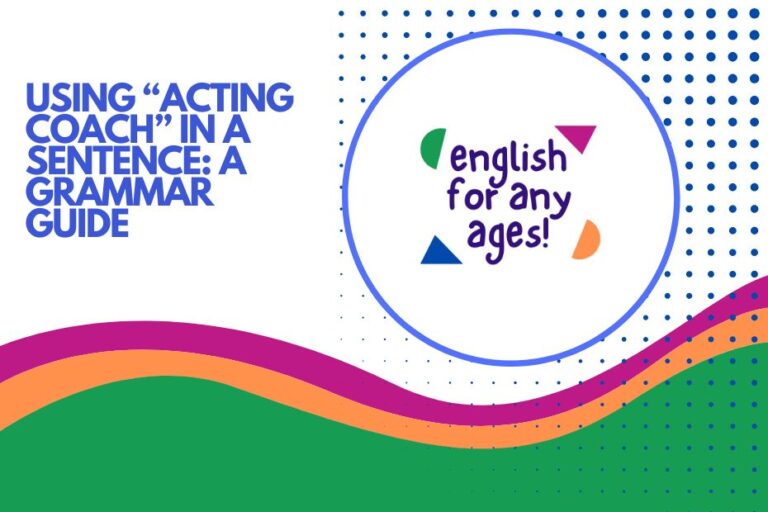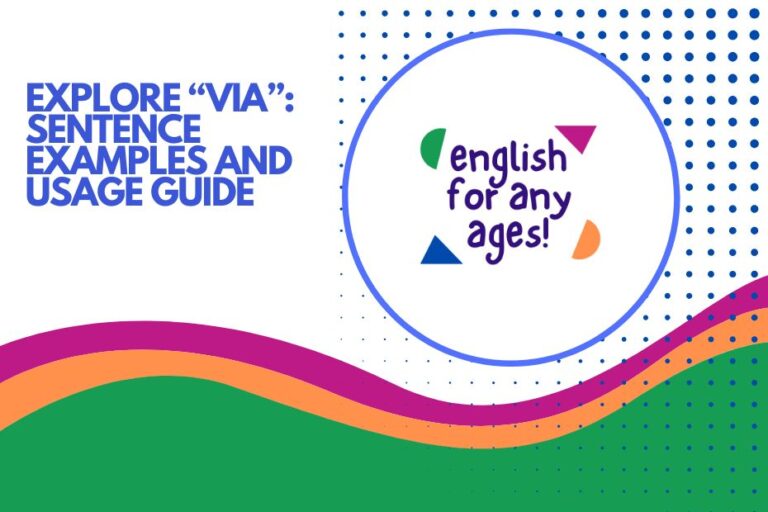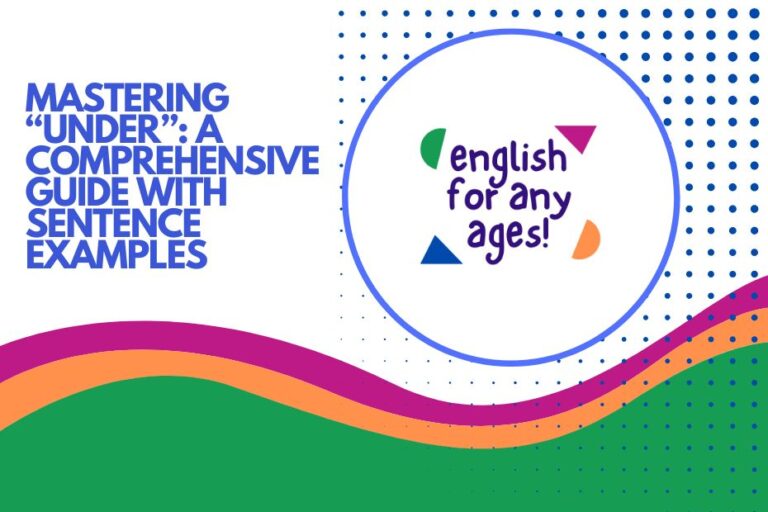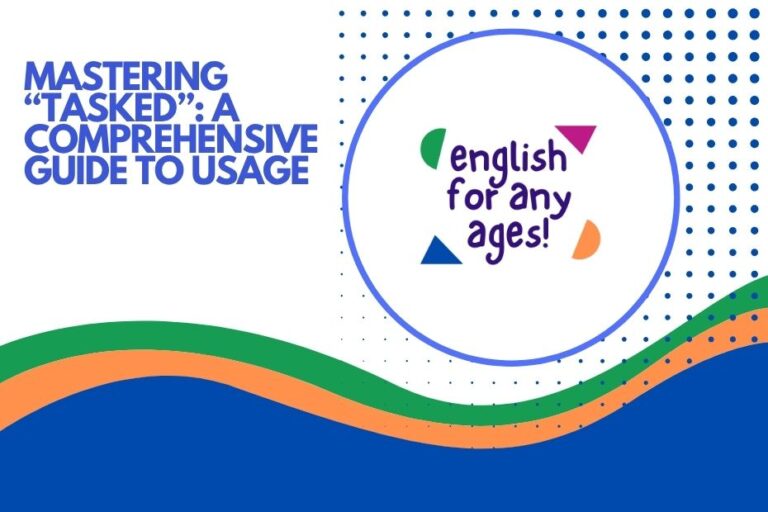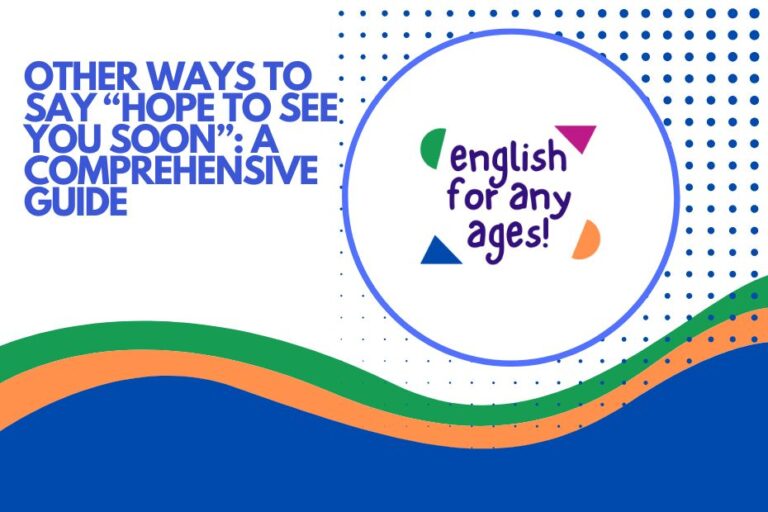Mastering “After”: Sentence Examples and Usage Guide
Understanding the preposition “after” is crucial for constructing clear and accurate sentences in English. “After” indicates a temporal relationship, specifying that one event follows another.
This article provides a comprehensive guide to using “after” correctly, covering its definition, grammatical function, various usages, common mistakes, and practice exercises. Whether you are a beginner or an advanced learner, this guide will help you master the nuances of “after” and improve your overall English proficiency.
Table of Contents
- 1. Definition of “After”
- 2. Grammatical Function of “After”
- 3. Sentence Structure with “After”
- 4. Types of “After” Usage
- 5. Examples of “After” in Sentences
- 6. Usage Rules for “After”
- 7. Common Mistakes with “After”
- 8. Practice Exercises
- 9. Advanced Topics
- 10. Frequently Asked Questions (FAQ)
- 11. Conclusion
1. Definition of “After”
The word “after” is a versatile term in English grammar, primarily functioning as a preposition, conjunction, and adverb. In all its forms, “after” fundamentally denotes a temporal sequence.
It signifies that one event, action, or period occurs subsequently to another. Understanding the nuances of “after” in its various roles is essential for constructing grammatically correct and semantically precise sentences.
As a preposition, “after” specifies the time when something happens in relation to another event. For example, “after the meeting” indicates that something occurred following the meeting. As a conjunction, it connects two clauses, showing that the action in one clause follows the action in the other. For instance, “after he finished his work, he went home” illustrates a sequence of events. As an adverb, “after” can stand alone to indicate a later time or position, such as in the sentence, “He arrived soon after.”
2. Grammatical Function of “After”
“After” serves multiple grammatical functions in English sentences. Its primary role is to indicate a chronological sequence, specifying that one event or action occurs following another.
This temporal relationship is fundamental to its usage as a preposition, conjunction, and adverb. The specific function of “after” in a sentence depends on the context and the surrounding words.
As a preposition, “after” introduces a prepositional phrase, linking a noun or pronoun to the rest of the sentence. The prepositional phrase typically functions as an adverbial modifier, providing information about time.
As a conjunction, “after” connects two clauses, forming a complex sentence where one clause is subordinate to the other. The clause introduced by “after” specifies the earlier event.
As an adverb, “after” modifies a verb, adjective, or another adverb, indicating that something happens at a later time. Recognizing these different functions is crucial for correctly interpreting and constructing sentences with “after.”
3. Sentence Structure with “After”
Sentences using “after” can follow different structures depending on whether “after” is used as a preposition or a conjunction. When “after” is used as a preposition, the structure typically involves a main clause followed by a prepositional phrase beginning with “after.” The prepositional phrase modifies the verb or other elements in the main clause, providing temporal information.
For example, in the sentence “She felt relieved after the exam,” “after the exam” is a prepositional phrase modifying “felt relieved.”
When “after” is used as a conjunction, it connects two clauses, creating a complex sentence. The clause introduced by “after” can come either before or after the main clause.
If the “after” clause comes first, a comma usually separates it from the main clause. For instance, “After he ate dinner, he watched TV.” If the main clause comes first, the comma is often omitted.
For example, “He watched TV after he ate dinner.” The choice of structure can slightly affect emphasis, but both structures are grammatically correct. Understanding these structural variations is vital for constructing clear and effective sentences with “after.” The following table provides a comparison:
| Structure | Example | Explanation |
|---|---|---|
| Main Clause + after + Noun Phrase (Preposition) | They went home after the game. | “After the game” is a prepositional phrase indicating when they went home. |
| After + Clause, Main Clause (Conjunction) | After she finished her work, she went to bed. | “After she finished her work” is the subordinate clause, followed by the main clause. |
| Main Clause + after + Clause (Conjunction) | She went to bed after she finished her work. | The main clause comes first, followed by the subordinate clause introduced by “after.” |
| Adverb usage | He arrived soon after. | “After” functions as an adverb indicating a later time. |
4. Types of “After” Usage
The word “after” can function as a preposition, a conjunction, or an adverb, each with its specific role in a sentence.
4.1. “After” as a Preposition
When “after” is used as a preposition, it is followed by a noun, pronoun, or noun phrase. The prepositional phrase introduces information about when something happens in relation to another event.
The prepositional phrase typically functions as an adverbial modifier, providing temporal context to the main clause.
For example: “After lunch, we went for a walk.” Here, “after” connects “lunch” (a noun) to the rest of the sentence, indicating that the walk occurred following lunch. The phrase “after lunch” modifies the verb “went,” specifying when the action took place.
4.2. “After” as a Conjunction
As a conjunction, “after” connects two clauses, one of which is subordinate to the other. The “after” clause specifies the earlier event, while the main clause describes the subsequent event.
The order of the clauses can vary, but the meaning remains consistent.
For example: “After the rain stopped, the sun came out.” In this sentence, “after” connects the clause “the rain stopped” to the main clause “the sun came out.” The “after” clause indicates that the rain stopping preceded the sun coming out. Alternatively, the sentence can be structured as: “The sun came out after the rain stopped,” with the same meaning.
4.3. “After” as an Adverb
When “after” is used as an adverb, it typically stands alone or is part of a short phrase, indicating a later time or position. It does not introduce a phrase or clause but rather modifies the verb or the entire sentence.
For example: “He arrived soon after.” Here, “after” functions as an adverb, indicating that he arrived shortly after a previous event. The exact nature of the previous event is implied but not explicitly stated in the sentence.
5. Examples of “After” in Sentences
The following sections provide extensive examples of “after” used as a preposition, conjunction, and adverb, illustrating the various ways it can be incorporated into sentences.
5.1. Prepositional Examples
These examples showcase “after” used as a preposition, followed by a noun or noun phrase. Note how the “after” phrase provides a clear temporal reference point.
The table below provides a range of sentences using “after” as a preposition. Each example illustrates how “after” introduces a prepositional phrase that specifies the timing of an event or action relative to another.
| Example Sentence | Explanation |
|---|---|
| She went to bed after dinner. | “After dinner” indicates the time when she went to bed. |
| The children played after school. | “After school” specifies when the children played. |
| We will discuss it after the meeting. | “After the meeting” pinpoints when the discussion will occur. |
| He felt much better after the surgery. | “After the surgery” indicates when he felt better. |
| They celebrated after the victory. | “After the victory” specifies when they celebrated. |
| The garden looks beautiful after the rain. | “After the rain” indicates the time when the garden looks beautiful. |
| She always feels tired after work. | “After work” specifies when she feels tired. |
| The city is quiet after midnight. | “After midnight” indicates when the city is quiet. |
| He started his new job after graduating from college. | “After graduating from college” specifies when he started his new job. |
| She called him after her presentation. | “After her presentation” indicates when she called him. |
| They arrived after the concert started. | “After the concert started” indicates when they arrived. |
| He apologized after realizing his mistake. | “After realizing his mistake” specifies when he apologized. |
| She felt refreshed after a long nap. | “After a long nap” indicates when she felt refreshed. |
| They went for a swim after lunch. | “After lunch” specifies when they went for a swim. |
| He completed the project after several delays. | “After several delays” indicates when he completed the project. |
| She felt nervous after the interview. | “After the interview” specifies when she felt nervous. |
| They relaxed after a busy day. | “After a busy day” indicates when they relaxed. |
| He went to the gym after work. | “After work” specifics when he went to the gym. |
| The flowers bloomed after the first frost. | “After the first frost” indicates when the flowers bloomed. |
| She smiled after hearing the good news. | “After hearing the good news” specifies when she smiled. |
| The dog barked after the mailman left. | “After the mailman left” indicates when the dog barked. |
| He felt relieved after finishing the marathon. | “After finishing the marathon” specifics when he felt relieved. |
| She cooked dinner after getting home. | “After getting home” indicates when she cooked dinner. |
| They went shopping after receiving their paychecks. | “After receiving their paychecks” specifics when they went shopping. |
| He felt healthier after starting his new diet. | “After starting his new diet” indicates when he felt healthier. |
| She read a book after putting the kids to bed. | “After putting the kids to bed” specifics when she read a book. |
5.2. Conjunction Examples
These examples demonstrate “after” used as a conjunction, connecting two clauses. Pay attention to the comma usage when the “after” clause comes first.
The table below illustrates sentences using “after” as a conjunction. Each example demonstrates the connection between two clauses and the temporal relationship indicated by “after.”
| Example Sentence | Explanation |
|---|---|
| After he finished his work, he went home. | “After he finished his work” is the subordinate clause, indicating what happened first. |
| She called me after she arrived at the airport. | “After she arrived at the airport” indicates when she called. |
| After the movie ended, we went out for dinner. | “After the movie ended” specifies when they went out for dinner. |
| He felt much better after he took the medicine. | “After he took the medicine” indicates when he felt better. |
| After they won the game, they celebrated with their fans. | “After they won the game” specifies when they celebrated. |
| After it rained, the garden looked refreshed. | “After it rained” indicates when the garden looked refreshed. |
| She always feels relaxed after she takes a bath. | “After she takes a bath” specifies when she feels relaxed. |
| After the clock struck midnight, the party ended. | “After the clock struck midnight” indicates when the party ended. |
| After he graduated from college, he started his career. | “After he graduated from college” specifies when he started his career. |
| After she gave her presentation, she felt relieved. | “After she gave her presentation” specifies when she felt relieved. |
| After they finished eating, they cleared the table. | “After they finished eating” indicates when they cleared the table. |
| He apologized after he realized he was wrong. | “After he realized he was wrong” specifies when he apologized. |
| After she woke up, she made a cup of coffee. | “After she woke up” indicates when she made coffee. |
| After they went for a walk, they felt refreshed. | “After they went for a walk” specifics when they felt refreshed. |
| After he completed the project, he took a vacation. | “After he completed the project” specifies when he took a vacation. |
| After she finished the interview, she felt hopeful. | “After she finished the interview” specifies when she felt hopeful. |
| After they relaxed, they went to bed. | “After they relaxed” specifies when they went to bed. |
| After he finished work, he went to the gym. | “After he finished work” specifies when he went to the gym. |
| After the movie started, the lights dimmed. | “After the movie started” indicates when the lights dimmed. |
| After she read the book, she wrote a review. | “After she read the book” specifies when she wrote a review. |
| After the storm passed, the sun came out. | “After the storm passed” indicates when the sun came out. |
| After he finished the race, he collapsed from exhaustion. | “After he finished the race” specifies when he collapsed. |
| After she cleaned the house, she relaxed on the couch. | “After she cleaned the house” indicates when she relaxed. |
| After they planted the seeds, they watered the garden. | “After they planted the seeds” specifics when they watered the garden. |
5.3. Adverb Examples
These examples illustrate “after” used as an adverb, indicating a later time or position. Note that “after” often appears alone or in short phrases.
The table below showcases sentences using “after” as an adverb. Each example illustrates how “after” modifies the verb or the sentence to indicate a time following a specific event.
| Example Sentence | Explanation |
|---|---|
| He arrived soon after. | “After” indicates that he arrived shortly after a previous event. |
| She left shortly after. | “After” specifies that she left soon after a previous event. |
| They finished the project soon after. | “After” indicates that they finished the project shortly after a previous event. |
| The rain stopped soon after. | “After” specifies that the rain stopped soon after a previous event. |
| The concert ended soon after. | “After” indicates that the concert ended shortly after a previous event. |
| The movie started soon after. | “After” specifies that the movie started soon after a previous event. |
| The meeting began soon after. | “After” indicates that the meeting began shortly after a previous event. |
| The game resumed soon after. | “After” specifies that the game resumed soon after a previous event. |
| The show began soon after. | “After” indicates that the show began shortly after a previous event. |
| The class started soon after. | “After” specifies that the class started soon after a previous event. |
| The announcement came soon after. | “After” indicates that the announcement came shortly after a previous event. |
| The news broke soon after. | “After” specifies that the news broke soon after a previous event. |
| The results were announced soon after. | “After” indicates that the results were announced shortly after a previous event. |
| The decision was made soon after. | “After” specifies that the decision was made soon after a previous event. |
| The agreement was signed soon after. | “After” indicates that the agreement was signed shortly after a previous event. |
| The contract was approved soon after. | “After” specifies that the contract was approved soon after a previous event. |
| The shipment arrived soon after. | “After” indicates that the shipment arrived shortly after a previous event. |
| The delivery came soon after. | “After” specifies that the delivery came soon after a previous event. |
| The package was received soon after. | “After” indicates that the package was received shortly after a previous event. |
| The letter arrived soon after. | “After” specifies that the letter arrived soon after a previous event. |
| He called back soon after. | “After” indicates that he called back shortly after a previous event. |
| She replied soon after. | “After” specifies that she replied soon after a previous event. |
| They responded soon after. | “After” indicates that they responded shortly after a previous event. |
| The team reacted soon after. | “After” specifies that the team reacted soon after a previous event. |
6. Usage Rules for “After”
Using “after” correctly involves adhering to certain grammatical rules, particularly regarding tense agreement and comma usage. These rules ensure clarity and coherence in your writing.
6.1. Tense Agreement
When “after” is used as a conjunction, it is crucial to maintain tense agreement between the two clauses. The tense in the “after” clause should logically precede the tense in the main clause.
This reflects the chronological sequence indicated by “after.”
For example: “After he had finished his work, he went home.” Here, the past perfect tense “had finished” in the “after” clause indicates that the action of finishing work occurred before the action of going home (past simple tense). Incorrect tense usage can lead to confusion and misinterpretation.
6.2. Comma Usage
When the “after” clause comes before the main clause, a comma is generally used to separate the two clauses. This comma helps to improve readability and clarify the sentence structure.
For example: “After she finished her exam, she went out for coffee.” The comma after “exam” separates the “after” clause from the main clause. However, when the main clause comes before the “after” clause, the comma is often omitted, especially in informal writing.
For example: “She went out for coffee after she finished her exam.”
6.3. Subject-Verb Agreement
Ensure that the subject and verb in both the main clause and the “after” clause agree in number. This is a fundamental grammar rule that applies regardless of the presence of “after.”
For example: “After she finishes her work, she will go home.” The singular subject “she” agrees with the singular verb “finishes” in the “after” clause. Similarly, in the main clause, “she” agrees with “will go.”
7. Common Mistakes with “After”
Several common mistakes can occur when using “after,” particularly regarding tense agreement and prepositional usage. Recognizing and avoiding these mistakes is essential for accurate writing.
Incorrect Tense Usage: A common error is using the wrong tense in either the “after” clause or the main clause, leading to a confusing or illogical sequence of events. For example:
- Incorrect: After he finishes his work, he went home.
- Correct: After he finished his work, he went home.
- Correct: After he finishes his work, he will go home.
Incorrect Prepositional Usage: Another mistake is using “after” incorrectly as a preposition, often by omitting the necessary noun or pronoun. For example:
- Incorrect: She felt tired after.
- Correct: She felt tired after the meeting.
Comma Omission: Forgetting to use a comma when the “after” clause comes first can make the sentence harder to read. For example:
- Incorrect: After he ate dinner he watched TV.
- Correct: After he ate dinner, he watched TV.
The following table provides more examples of common mistakes along with their corrections:
| Incorrect | Correct | Explanation |
|---|---|---|
| After he will arrive, we will start the meeting. | After he arrives, we will start the meeting. | Incorrect future tense in the “after” clause. Use present simple for future events. |
| She went to the store after she will finish work. | She went to the store after she finished work. | Incorrect future tense in the “after” clause. Use past simple to match the main clause. |
| After the rain stopped the sun shines. | After the rain stopped, the sun shone. | Missing comma and incorrect present tense in the main clause. |
| He called me after. | He called me after the concert. | Missing object of the preposition “after”. |
| After she graduated she is working as a nurse. | After she graduated, she worked as a nurse. | Incorrect present continuous tense in the main clause. Use past simple to indicate a completed action. |
| After he had eaten, he is going to bed. | After he had eaten, he went to bed. | Incorrect present continuous tense in the main clause. Use past simple to match the past perfect. |
8. Practice Exercises
These practice exercises will help you reinforce your understanding of “after” and its various usages. Each exercise focuses on a different aspect of “after,” including prepositional phrases, conjunctions, and sentence construction.
8.1. Exercise 1: Fill in the Blanks
Complete the following sentences by filling in the blanks with appropriate phrases using “after.”
| Question | Answer |
|---|---|
| 1. She went to the library __________. | after lunch |
| 2. __________ , he went to bed. | After he finished reading |
| 3. They celebrated __________ . | after winning the championship |
| 4. __________ , she felt much better. | After she took the medicine |
| 5. He arrived __________ . | soon after |
| 6. She called me __________ . | after the meeting |
| 7. __________ , they went for a walk. | After they had dinner |
| 8. He apologized __________ . | after realizing his mistake |
| 9. She smiled __________ . | after hearing the good news |
| 10. They relaxed __________ . | after a busy day |
8.2. Exercise 2: Correct the Sentences
Identify and correct the errors in the following sentences involving “after.”
| Question | Answer |
|---|---|
| 1. After he will arrive, we can start. | After he arrives, we can start. |
| 2. She felt happy after. | She felt happy after the party. |
| 3. After she finished work she went home. | After she finished work, she went home. |
| 4. He will call you after he will eat dinner. | He will call you after he eats dinner. |
| 5. After they had lunch they are going to the park. | After they had lunch, they went to the park. |
| 6. She will be happy after she will receive the gift. | She will be happy after she receives the gift. |
| 7. After he is finishing his homework, he can play. | After he finishes his homework, he can play. |
| 8. They celebrated after they are winning. | They celebrated after they won. |
| 9. After she will graduate, she wants to travel. | After she graduates, she wants to travel. |
| 10. He is tired after he run the marathon. | He is tired after he ran the marathon. |
8.3. Exercise 3: Sentence Building
Combine the following sentence parts using “after” to create grammatically correct and meaningful sentences.
| Question | Answer |
|---|---|
| 1. She / finish her work / she / go home | After she finished her work, she went home. |
| 2. They / win the game / they / celebrate | After they won the game, they celebrated. |
| 3. He / eat dinner / he / watch TV | After he ate dinner, he watched TV. |
| 4. She / arrive at the airport / she / call me | After she arrived at the airport, she called me. |
| 5. They / study / they / take the exam | After they studied, they took the exam. |
| 6. He / realize his mistake / he / apologize | After he realized his mistake, he apologized. |
| 7. She / finish the book / she / write a review | After she finished the book, she wrote a review. |
| 8. They / plant the seeds / they / water the garden | After they planted the seeds, they watered the garden. |
| 9. He / run the marathon / he / feel exhausted | After he ran the marathon, he felt exhausted. |
| 10. She / clean the house / she / relax on the couch | After she cleaned the house, she relaxed on the couch. |
9. Advanced Topics
For advanced learners, understanding more complex aspects of “after” usage can further enhance their English proficiency.
9.1. Inversion with “After”
In formal writing, particularly in literary contexts, inversion can occur with “after,” where the auxiliary verb comes before the subject. This is typically done for emphasis or stylistic effect.
However, this usage is relatively rare and should be used judiciously.
For example: “After had been completed the project, the team celebrated.” This is an inverted form of “After the project had been completed, the team celebrated.” While grammatically correct, it is more common to use the standard structure.
9.2. “After” in Formal Writing
In formal writing, it is important to maintain a consistent and precise use of “after.” Avoid ambiguous or informal constructions. Ensure that tense agreement is strictly adhered to and that comma usage is correct.
Also, strive for clarity and conciseness in your sentences.
For example, instead of saying “He did it after,” which is vague, specify “He did it after the meeting concluded.” This provides a clear and unambiguous temporal reference.
10. Frequently Asked Questions (FAQ)
Here are some frequently asked questions about using “after,” along with detailed answers to clarify any remaining doubts.
- Can “after” be used at the end of a sentence?
Yes, “after” can be used at the end of a sentence, typically as an adverb. However, this usage is often elliptical, implying a previous event. For example, “He arrived soon after” implies that he arrived soon after a specific event that is understood from the context.
- Is a comma always necessary after the “after” clause?
A comma is generally used after the “after” clause when it comes before the main clause. This comma helps to separate the two clauses and improve readability. However, when the main clause comes first, the comma is often omitted, especially in informal writing.
- What tense should I use in the “after” clause?
The tense in the “after” clause should logically precede the tense in the main clause. For example, if the main clause is in the past simple tense, the “after” clause might be in the past perfect tense to indicate that the action in the “after” clause occurred before the action in the main clause.
- Can “after” be used with the future tense?
Yes, “after” can be used with the future tense, but the “after” clause typically uses the present simple tense to refer to a future event. For example, “After he finishes his work, he will go home.”
- Is it correct to say “after of”?
No, it is generally incorrect to use “after of.” “After” is typically followed directly by a noun, pronoun, or clause. The preposition “of” is


